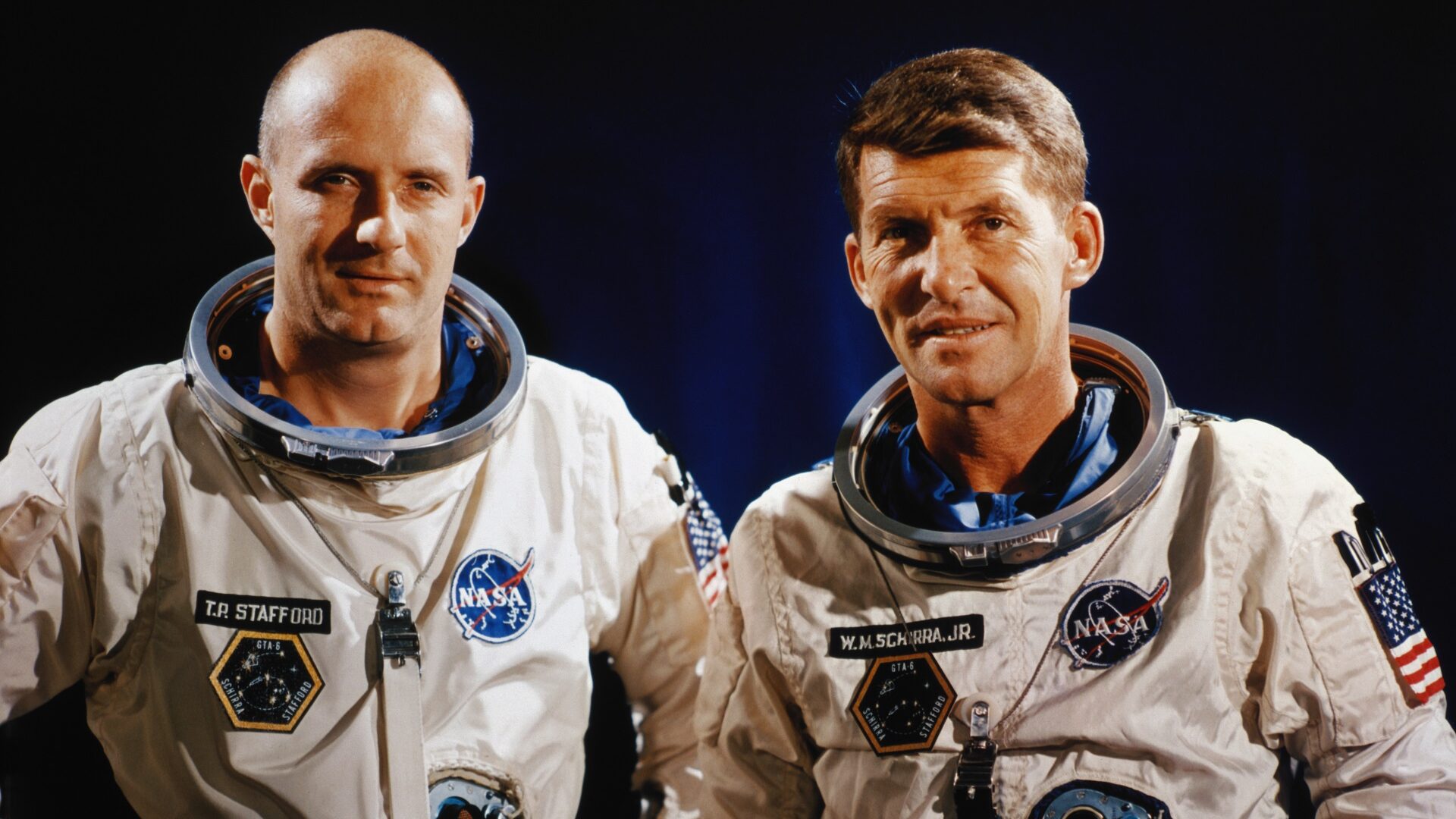

Like Batman and the Joker, or the Red Sox and the Yankees, the rivalry between the Air Force and the Navy is long and complicated. The highly-influential Air Force pilot Col. John Boyd said in 1969, “We don’t care what the Russians are doing. We only care about what the Navy is doing,” which summarizes how the two services have battled over airpower funding and fighter aircraft designs for decades.
But any rivalry can be put to rest with a little Christmas spirit, especially when you’re isolated in the cold vacuum of space. And that, dear reader, is how the first song was ever performed live in outer space, according to The Smithsonian.
A little more than 56 years ago, on Dec. 16, 1965, an Air Force pilot named Thomas Stafford and a Navy pilot named Wally Schirra played the Christmas anthem ‘Jingle Bells’ on a harmonica and miniature sleigh bells just before re-entering Earth’s atmosphere.
However, the song was performed not solely for peace on Earth and good will to men. No, the airman and sailor were bound together by the long military aviator tradition of trolling people on the ground.
For context: Stafford and Schirra had been sitting in a cramped space about the size of an economy-class airline seat for more than a day. They had just accomplished the first space rendezvous with their sister ship, Gemini 7, a maneuver that “required the most exacting pilot and computer control of a space vehicle yet attempted,” according to Smithsonian Magazine. Four days earlier, the two astronauts had nearly died after an engine malfunction almost destroyed their rocket on the launch pad.
“The crew was exceedingly lucky that the Titan [rocket] hadn’t actually taken flight,” said space flight historian Amy Shira Teitel in a 2015 video. “Had they even gotten a few inches off the launch pad when the engines shut down they would have fallen back down and it would have exploded.”
Stafford and Schirra had a second lucky break that day when they didn’t pull the D-ring that would have triggered their ejection seats.
“Even though the system was designed for their safety it would have been a bit of a painful ride owing to the high-G forces,” Teitel said.
It also might have lit them up like “two Roman candles,” as Stafford recalled in a 1997 oral history for NASA, because the capsule was filled with highly-flammable pure oxygen.
“It would have burned the suits,” Stafford said. “Everything was soaked in oxygen. So thank God.”
Close calls with sudden death are a routine occurrence for any military aviator. With that kind of weight in the background, it’s hard to blame them for having a little fun every once in a while. Maybe that’s why Stafford and Schirra smuggled their mini sleigh bells and harmonica into their cramped capsule. But before they performed, they had to work the crowd first.

While preparing to re-enter Earth’s atmosphere, Stafford reported seeing some kind of unidentified flying object.
“We have an object, looks like a satellite going from north to south, probably in a polar orbit,” Stafford told Mission Control in Houston, Texas. “Looks like he might be going to re-enter soon. Stand by one; it looks like he’s trying to signal us.”

Then the two astronauts picked up their instruments and scratched out the first live concert in space. They had come up with the plan weeks before the mission.
“Wally came up with the idea,” Stafford told the Smithsonian. “He could play the harmonica, and we practiced two or three times before we took off, but of course we didn’t tell the guys on the ground….We never considered singing, since I couldn’t carry a tune in a bushelbasket.”
Stafford could tell Mission Control was getting tense when he described an unknown object in orbit with them, but the mood was much lighter after he and Schirra played their song.
“You’re too much [Gemini] 6,” Mission Control said afterwards.
h/t to The Merge newsletter for alerting us to this special story.
Read more on Task & Purpose
- The Navy is rusting away thanks to a crushing deployment cycle
- Selfless service and sacrifice: Meet the 3 newest Medal of Honor recipients
- Saboteur or fall guy? Inside the Navy case against sailor accused of torching the USS Bonhomme Richard
- If you reenlist, the US Army will let you ride in a helicopter most already get to ride in
- The Marine Corps may have blown its case against special operators accused of killing a former Green Beret
- Alwyn Cashe was a hero to his soldiers long before he charged into a burning vehicle in Iraq
- Everyone should be jealous of this Air Force pilot skateboarding down the flight line
Want to write for Task & Purpose? Click here. Or check out the latest stories on our homepage.
